World 🢖 Australia and Oceania 🢖 Polynesia 🢖 French Polynesia 🢖 Windward Islands
Megaliths 🢔 Archaeological wonders 🢔 Categories of wonders
Wonder
Marae Arahurahu
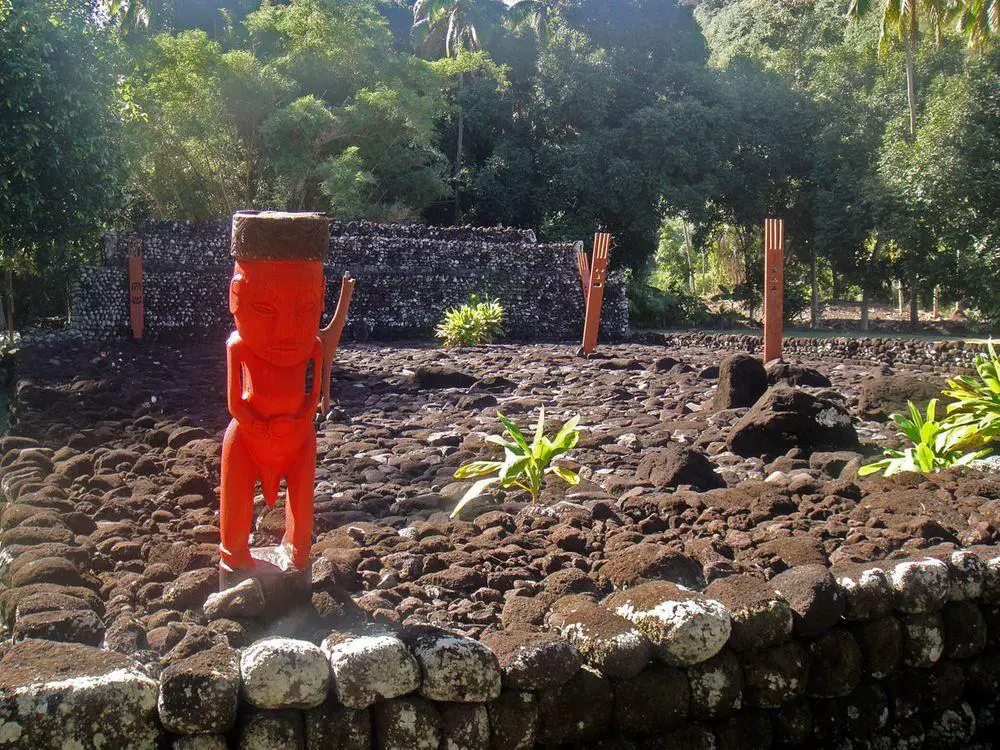
 In short
In short
The reconstruction of the enormous Marae Arahurahu in 1953 has been a success – Tahiti obtained one more attractive destination of culture tourism and many tourists have learned here a lot about the Polynesian culture.
 44.3%
44.3%
GPS coordinates
Location, address
Alternate name
Age
Culture
Map of the site
If you see this after your page is loaded completely, leafletJS files are missing.
 In detail
In detail
Since then many more archaeological sites have been restored in French Polynesia – some without due regard to the original structure but many – with good skills and a clear understanding of the meaning and structure of the archaeological monument.
Marae
Marae are specific Polynesian cultural monuments – for the most part, rectangular, raised areas encircled with stone settings. Inside the rectangle is located a raised altar part (ahu), which is clad with stones.
These structures were used by Polynesians for ceremonial gatherings, such as religious rituals, important weddings, celebrations of military victories, enthronement of kings. The gods were worshiped in marae with offerings of food.
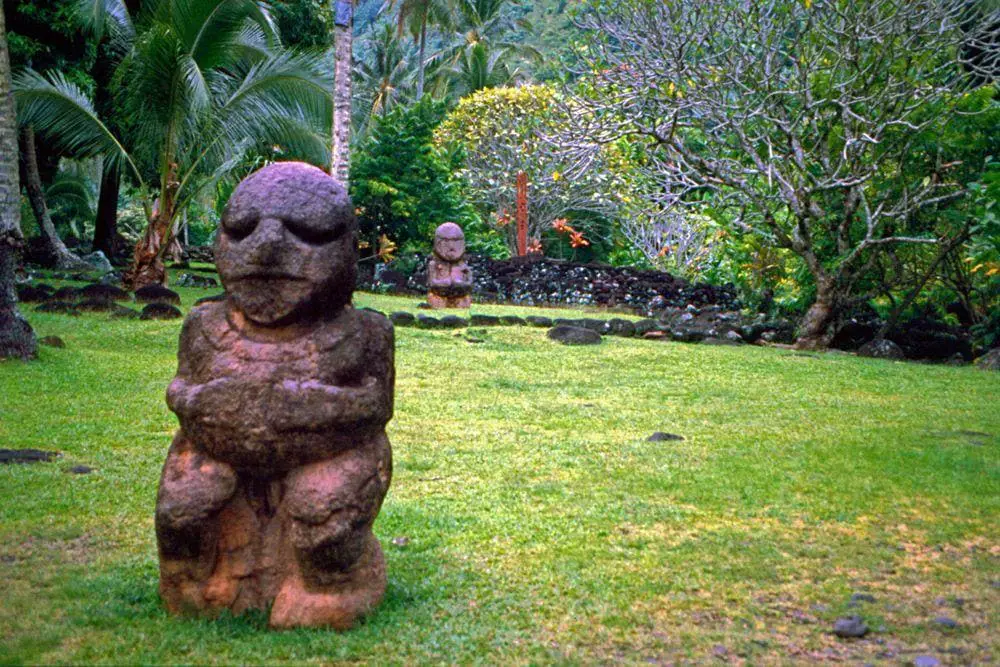
Largest ceremonial complex in Tahiti
While there existed numerous marae of lower importance, marae Arahurahu belonged to the local king (arii) and served as a central gathering place of the whole small "nation" of this valley.
The area of this marae is approximately 500 m³ and it is the most impressive in the whole Tahiti island. The surrounding area is always well kept and resembles a parkland.
The ahu (altar part) of this structure rises 3 m high and is made of stones.
Marae, especially ahu, is adorned with interesting, bright red colored wooden sculptures (unu). These are representations of the ancestors of influential local families.
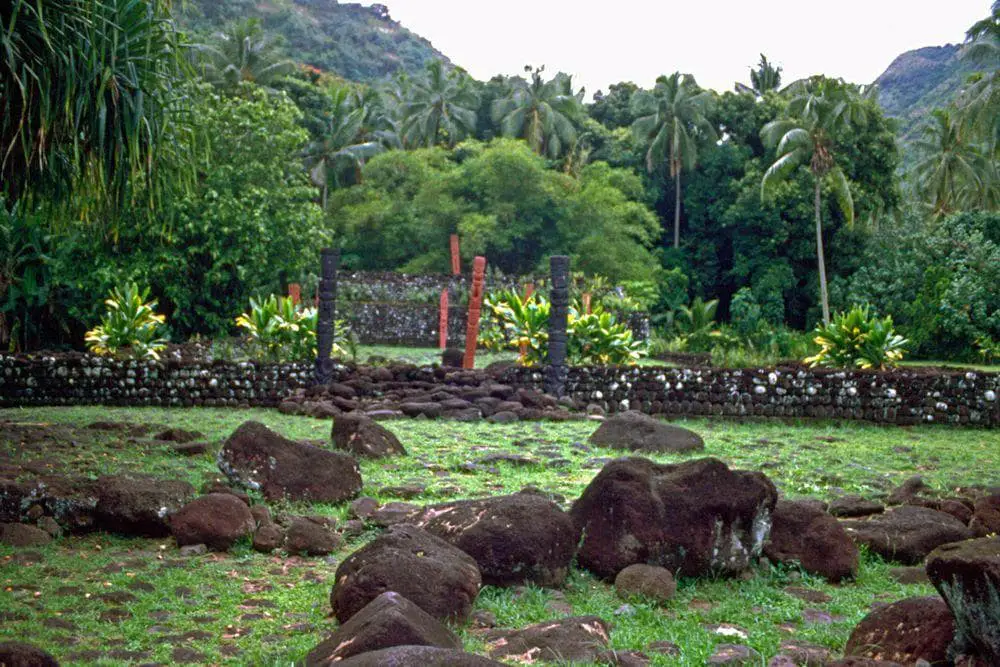
Diverse trees were planted around the marae, thus turning this beautiful area into an even more beautiful park, but also providing a shaded, mysterious feel to this monument.
Tiki
Two stone statues – guardians meet the visitors at the entrance in the marae. These statues are not true archaeological monuments – they are replicas of tiki from Ra’ivavae Island in French Polynesia and were made in 1983.
Restoration
Marae was restored under the leadership of the specialists of Bishop Museum in 1953. For this first restoration project, they choose an ancient marae, which was comparatively close to Papeete, located in a picturesque site, visually impressive and with high historical importance.
Cultural centre
Very soon – almost immediately – marae Arahurahu started to live its own life, rich with events and visitors. Each year in July here takes place the national Heiva festival when Polynesian artists provide plenty of performances.
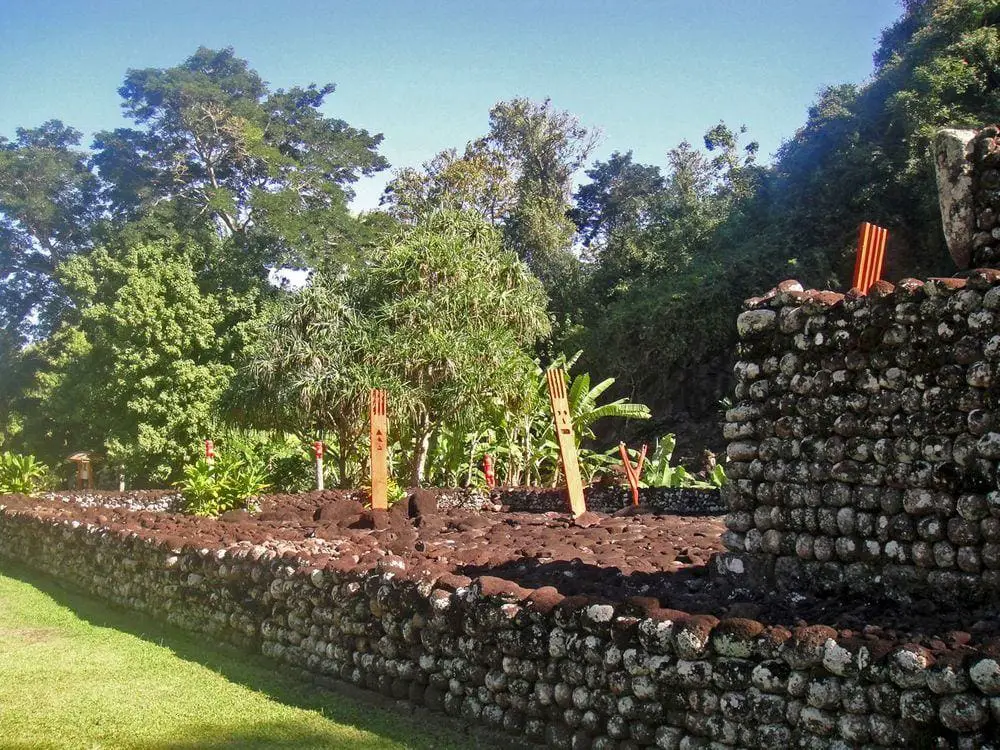
Often such festivities have little in common with the original meaning of the structure, for example, here is played theatre. Local people enjoy being here and come just for a Sunday walk.
The site has informative signs which explain all the diverse details of this once important feature in the life of Polynesians.
Legend
In earlier times this marae was called Tu-Matamata-Hia. But there is a legend how the name of marae was changed to its present-day name.
Once here took place a deadly fight between the warriors representing two local kings (arii) – Tu-Mata-ira and Tutu-Ai-Aro. The battle lasted until sunset when the warrior of Tu-Mata-ira was defeated, killed and his spear was broken into four pieces.
Tu-Mata-ira was in despair about the loss of his warrior. He ordered to make a large pit and made a fire there. When the fire heated the stones around it, with the pieces of the broken spear the stones were spread in the pit, and in the center of the pit was placed the body of the slain hero.
One part of the broken spear was placed at the head of the warrior and one – under his ankles. The two remaining parts were placed on each side of the body.
After the period of mourning the pyre was opened and the king declared that marae should be renamed to Arahurahu until the end of the time.
Many believe that the spirit (tupaupau) of the slain hero still is lingering here.
 Linked articles
Linked articles
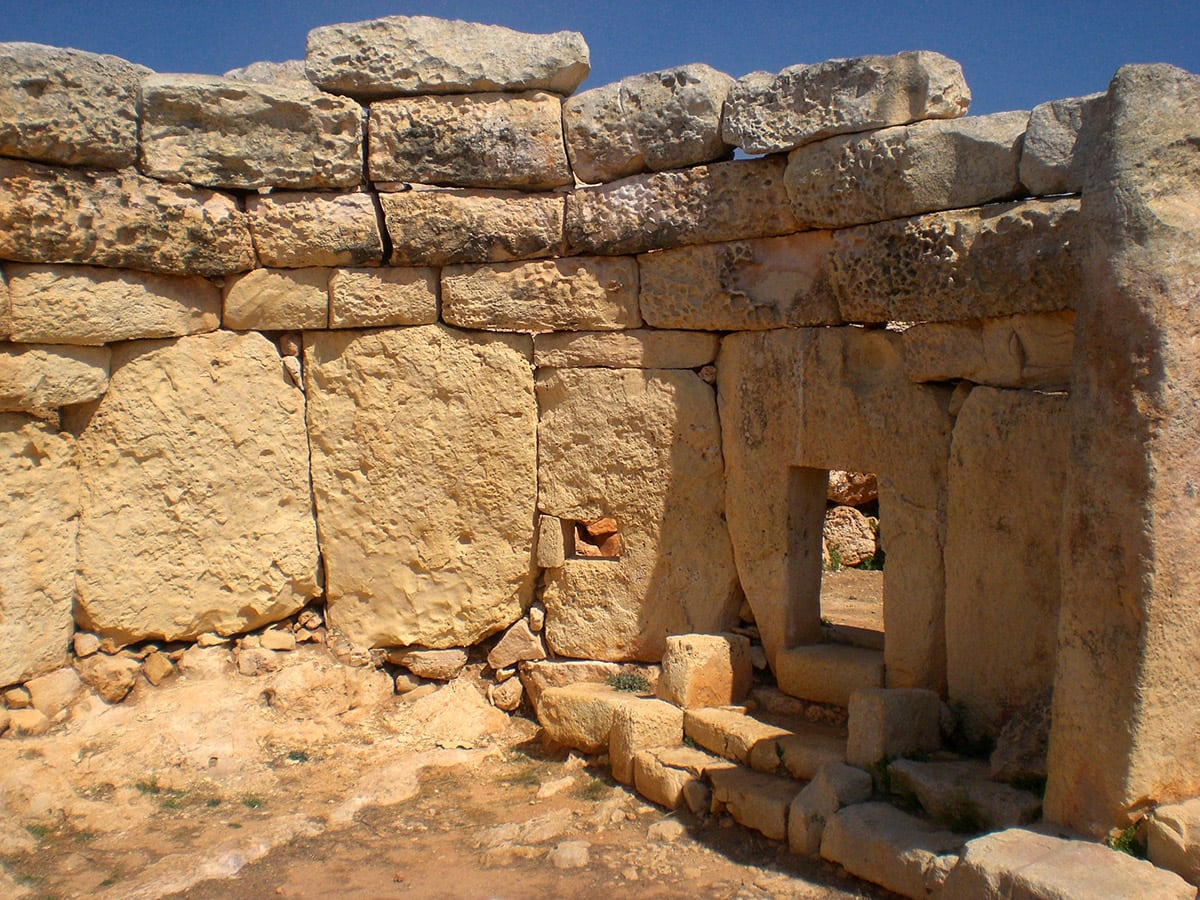
Megaliths
One of the most fascinating groups of archaeological monuments are prehistoric structures made of stones – megaliths. Through the ages, people have loved to strain their minds to find a sensible explanation for the many riddles posed by megaliths.
Even today, we can admit with some pleasure, there are thousands of mysteries left for us.
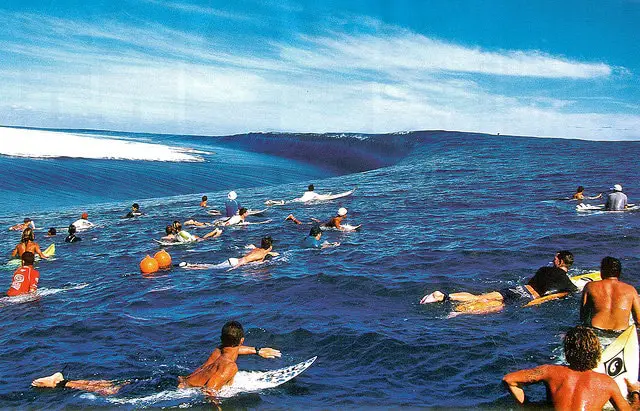
Wonders of the Windward Islands
The Windward Islands, especially Tahiti, are some of the best-known and most interesting Polynesian islands. These islands in a way represent the essence of the Southern seas – with palms, rugged mountains, deep blue sea, and friendly people.

Wonders of French Polynesia
The most amazing wonders of French Polynesia are diverse natural landmarks – ecosystems, caves, waterfalls as well as archaeological heritage.
 Recommended books
Recommended books
Unearthing the Polynesian Past
Perhaps no scholar has done more to reveal the ancient history of Polynesia than noted archaeologist Patrick Vinton Kirch. For close to fifty years he explored the Pacific, as his work took him to more than two dozen islands spread across the ocean, from Mussau to Hawai’i to Easter Island. In this lively memoir, rich with personal―and often amusing―anecdotes, Kirch relates his many adventures while doing fieldwork on remote islands.
Moon Tahiti
South Pacific expert David Stanley knows the best way to vacation in Tahiti, from browsing the Papeete market to snorkeling off the island of Moorea. This guide includes unique trip ideas like The Best of French Polynesia and Underwater in the Tuamotu Islands. Complete with details on taking lagoon tours and jeep safaris, lounging in Polynesian spas, and partaking in lavish seafood buffets, Moon Tahiti gives travelers the tools they need to create a more personal and memorable experience.


